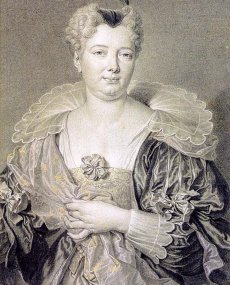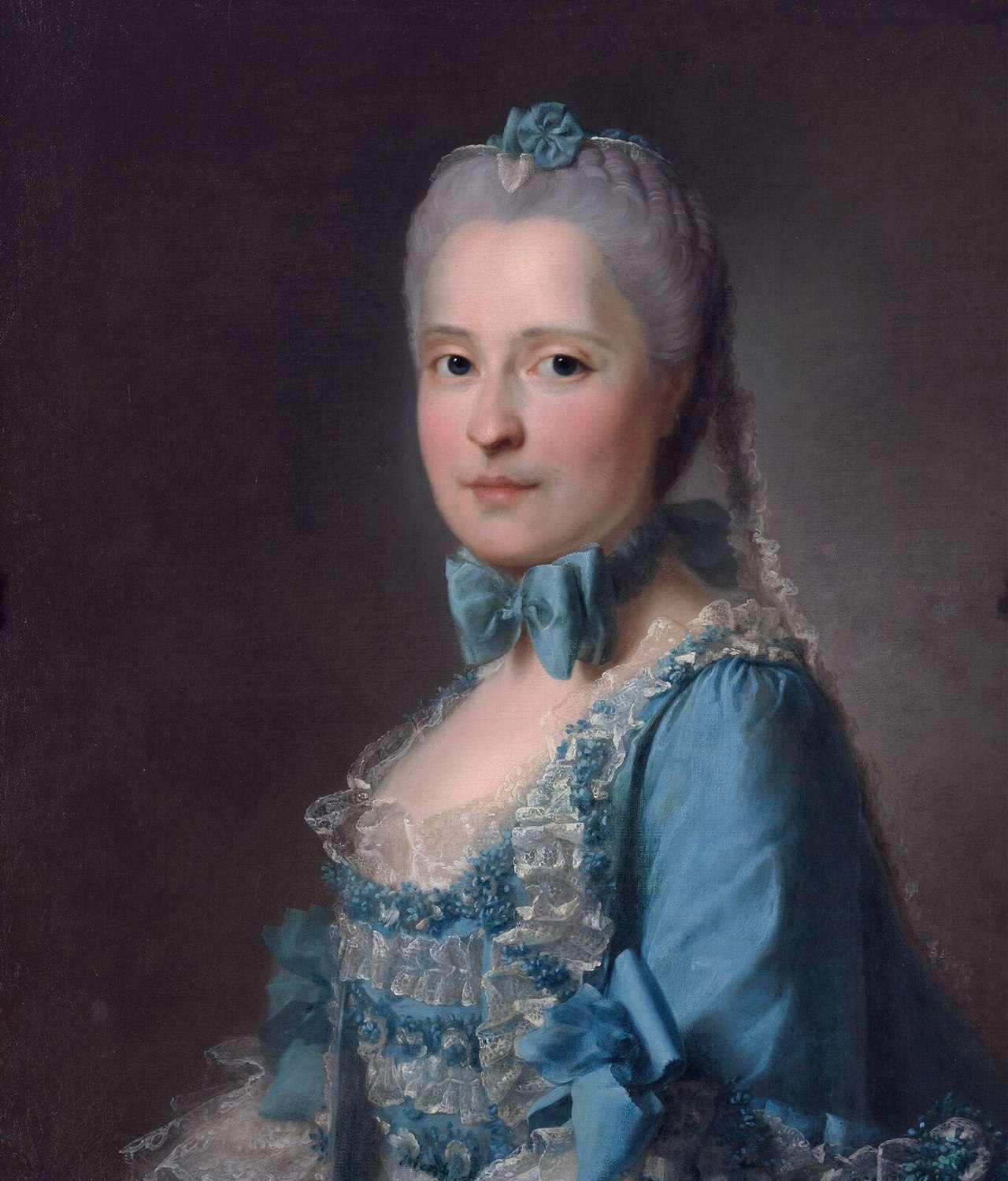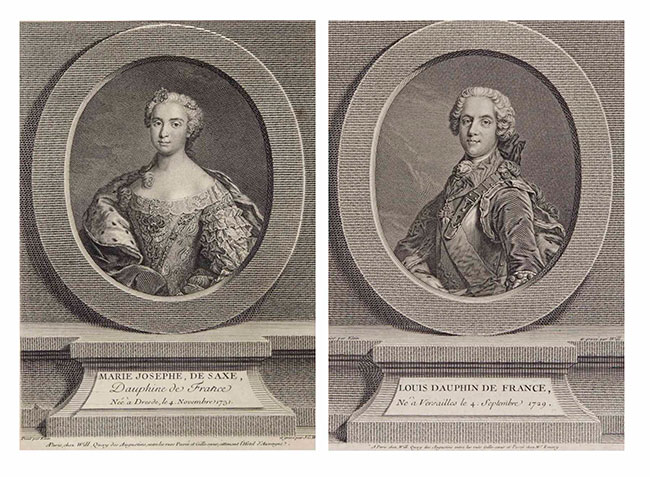Few families have played such consistent part in the political engine of Versailles than that of the Phélypeaux. Originating near Blois, at the heart of France, the family had divided into two branches by the ascension of Louis XIV: Pontchartrain-Maurepas and La Vrillière.
The family had an iron grip on one of the coveted positions as Secretary of State; rather unusually, both branches were equally invested in the political game and both were remarkably successful. This made the family quite a powerful dynasty whose very power lay rather in their service than in their lineage. While their nobility was uncontested, they did not enjoy generations of ducal or princely rank. They were largely considered to be noblesse de robe as their family was almost exclusively committed to politics and parliaments rather than military service.
La Vrillière
Preceding the branch of Pontchartrain-Maurepas, that of La Vrillère began in the 16th century with Raymond Phélypeaux. Their name was derived from the fact that Raymond was seigneur of La Vrillière. Raymond had died before Louis XIII and consequently, the head of the branch was:
1. Louis Phélypeaux & Marie Particelli
Oddly enough, Louis was known by the La Vrillière-name rather than his otherwise established titles of Marquis de Châteauneuf or Comte de Saint-Florentin. Louis toiled away for decades within the inner machinery of political power and amassed several important posts, including those of Minister of State and Secretary for Protestant Affairs.
The couple had five children:
- Louis
- Balthasar, Marquis de Châteauneuf
- Marie
- Michel, Bishop of Uzès
- Agnès
2. Balthasar Phélypeaux & Marguerite de Fourcy
Remarkably little is known of the second Phélypeaux; it must be surmised that he did not attract particular notice but managed his affairs in a quiet manner.
Marguerite - or Marie-Marguerite, she is sometimes referred to - was also a member of the noblesse de robe. Her father had been a councillor of the Grand Conseil during Louis XIV's minority.
The couple had two children:
- Louis, Marquis de La Vrillière
- Charlotte Thérèse, Duchesse de La Feuillade
 |
| Balthasar |
3. Louis II Phélypeaux & Françoise de Mailly-Nesle
Inheriting the job of Secretary for Protestant Affairs, he would also take on the role of Secretary for the Navy. He would later be replaced by a cousin, Jean-Frédéric, in the naval department but handed down the Huguenot-position to his own son. At court, Louis was known as the Marquis de La Vrillière.
Françoise served as Marie Leszczynska's dame d'atours which placed her in both considerable standing at court and provided her with a personal income. She was the grandmother of the infamous Nesle-sisters, four of whom became Louis XV's mistresses. However, she was not fond of the idea of Julie Louise being the king's mistress and therefore attempted to have her replaced with Marie-Anne.
Françoise was only married to Louis for five years before he died. She would later remarry to the Duc de Meilleraye, who happened to also die - three months after their wedding.
The couple had four children:
- Anne Marie
- Marie Jeanne, Comtesse de Maurepas
- Louis, Duc de La Vrillière
- Louise Françoise, ambassadress to Denmark
 |
| Louis II |
4. Louis III Phélypeaux & Amélie Ernestine de Platen
Louis inherited the position of Secretary of Protestant Affairs and would later assume the role of head of the King's household; he would even take the post of Secretary of Foreign Affairs after the fall of Choiseul. After an impressive career in politics (which included the record for years in service), he retired in 1775. Louis was rewarded with the elevation to Duc de La Vrillière.
Amélie was the daughter of a German margrave; her family is still living while most emigrated to Denmark.
The couple does not seem to have had children.
 |
| Louis III |
 |
| Amélie Ernestine |
Pontchartrain-Maurepas
The Pontchartrain-Maurepas was founded by Paul Phélypeaux who assumed the position of Secretary of Protestant Affairs. He died prior to Louis XIV's enthronement, as did his son, Louis I. This meant that by the time Louis XIV was crowned, the family was headed by Louis II Phélypeaux de Pontchartrain.
1. Louis II Phélypeaux de Pontchartrain & Marie de Maupeou
Whereas his cousins dealt with the ministerial posts, Louis focused on the parliaments. During particularly unrestful times, he managed to bring about a peaceful resolution with unruly parliamentarians which caught the eye of Louis XIV. Summoned to court, the king recognised his obvious abilities for bureaucracy and his efficiency; Louis was made Controller-General of Finances. He would later assume the ministries of the navy and of the king's personal households. Both were a testament to the king's satisfaction with Louis' work. Being made Chancellor of State, his intelligence was widely admired as was his ability to command respect without force; even Saint-Simon admitted that here was a man who knew what he was doing.The couple had one child:
- Jérôme, Marquis de Phélypeaux
 |
| Louis II |
2. Jérôme Phélypeaux de Pontchartrain & (1) Éleonore Christine de La Rochefoucauld de Roye, (2) Hélène d'Aubespine
Like his father, Jérôme began his career in the parliaments before being groomed to take over his father's ministerial posts. He was particularly involved in the settlement of Louisiana (of French nationals, of course) and founded the Academie des Inscriptions et Belles-Lettres.
Éleonore was just 29 years old when she died although it is unclear what killed her at such an early age.
Jérôme had five children by Éleonore:
- Marie Françoise Christine
- Louis François, Comte de Maurepas
- Jean-Frédéric, Comte de Maurepas
- Paul Jérôme, Marquis de Chefboutonne
- Charles Henri, Bishop de Blois
- Marie Louise
- Hélène Françoise Angélique, Duchesse de Nevers
 |
| Jérôme |
3. Jean-Frédéric Phélypeaux de Pontchartrain & Jeanne Phélypeaux
Jean-Frédéric dutifully took over the family ministries and proved to particularly adept at the naval ministry; it was largely thanks to his administration that the French navy regained some international recognition. He had one of the most efficient networks throughout Europe which made it possible for him to foresee the maneuvers of rival states, particularly the British. Despite his obvious talent for his trade, he was overthrown in a coup headed by the Duc de Richelieu and supported by Madame de Pompadour, whom Jean-Frédéric had insulted.
Jean-Frédéric was recalled into service by Louis XVI, he committed his greatest blunder when he caved in to public pressure and recalled the parliaments. This would eventually have disastrous consequences and paved the way for the revolution.
 |
| Jean-Frédéric |
Interesting facts and anecdotes:
- Jérôme was compelled to resign his ministries upon the death of Louis XIV but managed to keep them in the family
- It was Raymond Balthasar Phélypeaux who - as ambassador to Savoy - discovered the plot against France concocted by the Duc de Savoy
- The Phélypeaux had a habit of reaching remarkably high ages; Jérôme died at 73 while his father lived to 84 and his grandfather to 72







